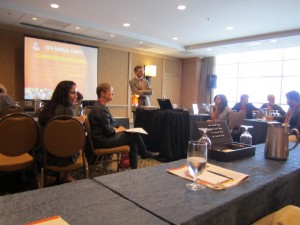
Kyle Bostian
Envisioning a City of Artists with “Soulful Stakes”
Posted by May 31, 2013

Kyle Bostian
Pittsburgh is widely – and deservedly – touted for its transformation from declining industrial center to post-industrial success story, with much attention devoted to the role played by the arts in that (ongoing) process. The site of the 2013 Americans for the Arts Annual Convention, downtown’s Cultural District, represents a shining example of how artistic activity can help drive an economic recovery.
But in many neighborhoods the transition isn’t quite as far along; in some, it’s barely begun. And, for me and plenty of other Pittsburgh residents, that raises questions about how artists – often among the “avant-garde” (regardless of the style of their work) in terms of moving into and restoring “blighted” areas – might strive to make the most of the opportunities presented to them there. In my case (and I’m by no means alone in this respect), these questions go beyond the relationship between artistic activity and economic revitalization to encompass broader aspects of community building, accessibility, and social justice.
As a citizen-artist-activist, I appreciate the feeling of community that the arts often generate among participants. I’m particularly interested in and devote some of my own creative energy to projects that address issues (social, economic, political) with direct relevance to local populations. I’m passionate about the work I do along those lines. At the same time, I wonder if there are ways I could use my creativity to engage more deeply with my communities and have a greater impact. That’s why I was struck so powerfully by the words of one panelist at a recent Pittsburgh Emerging Arts Leaders Network forum on “Arts as Urban Renewal.”
Read More












